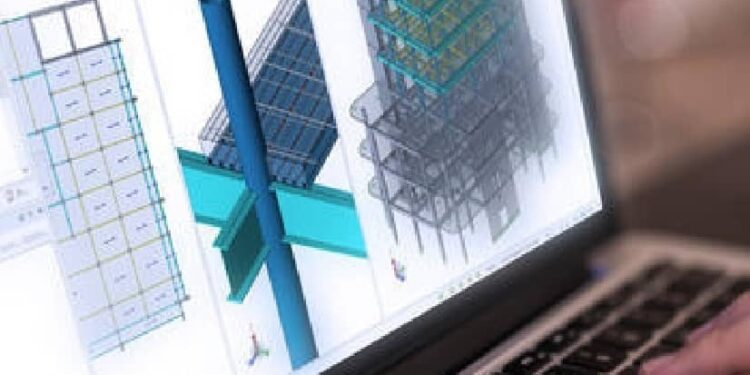Every building, from the smallest home to the grandest skyscraper, starts as an idea. Growing the initial idea into a tangible, habitable structure requires accurate documentation, and so enter the world of construction drawings, where concepts are converted into detailed blueprints for real-world execution.
Accurate construction drawings are essential for taking design intent and construction requirements to guide the building process. From early conceptual sketches to detailed fabrication plans, drawings provide vital information to owners, architects, engineers, contractors, subcontractors, and building officials.
While generated by hand in the past, technology now means construction drawings are created with CAD (computer-aided design) software. This digital efficiency has been a game-changer as many types of drawings are used at various stages of building design and construction.
Architectural Drawings:
Architectural drawings illustrate the scale, relationship between spaces, dimensions, materials, and overall aesthetic of a building project. They can include:
● Site plans showing property lines, adjacent streets, landscape features, and the building footprint.
● Floor plans indicating room layouts, door and window locations, interior finishes, and fixture locations on each level.
● Elevations depicting exterior facades from various angles.
● Sections slicing through a building to show spatial relationships, ceiling heights, etc.
● Details zooming in on specific assemblies like stairs, millwork, and wall sections.
Architectural drawings provide the overall visual language for a building and are integral for design reviews, permits, and construction.
Structural Drawings:
Architecture plays a crucial role in defining the spatial form of a building. However, the structural drawings serve as engineering documents, providing intricate illustrations of the skeletal framework that supports the entire structure.
These detailed drawings showcase the precise arrangement of beams, columns, and other elements, ensuring the structural integrity and stability of a building for years to come.
Key structural drawings can include:
● Foundation plans outlining footing sizes, pile locations, and foundation wall configurations.
● Framing plans showing column grid lines, beam sizes, floor joist layouts, and lateral bracing.
● Schedules showing member sizes, reinforcing requirements, and material specifications.
● Connection details for critical joints and assemblies.
Structural drawings must analyse load paths and ensure the structure can withstand gravity, wind, seismic, and other potential forces.
Mechanical, Electrical, and Plumbing (MEP) Coordination:
MEP (Mechanical, Electrical, and Plumbing) drawings are meticulously crafted blueprints that intricately outline and showcase the systems responsible for breathing life into buildings.
These comprehensive drawings visually represent the complex network of mechanical, electrical, and plumbing components that work harmoniously to ensure optimal functionality and efficiency within the completed environment.
● Mechanical drawings route HVAC systems and detail components like air handlers, ductwork, vents, and controls.
● Electrical drawings indicate lighting layouts, power distribution, low-voltage systems, panel schedules, and fixture details.
● Plumbing drawings locate supply and waste piping, plumbing fixtures, water heaters, and sprinkler systems.
Coordinated MEP drawings are crucial for avoiding clashes between trades during construction.
Site and Landscape Drawings:
Civil engineers play a crucial role in the construction process by producing detailed drawings for the site surrounding a building.
These drawings not only encompass the site’s physical layout but also consider various factors such as drainage systems, road networks, landscaping, and other essential elements.
By meticulously planning and designing the site, civil engineers ensure the building integrates seamlessly into its surroundings while adhering to safety and regulatory standards.
These types of drawings can include:
● Topographic maps showing existing grades and contours.
● Grading plans indicating new cut/fill levels and drainage.
● Utility plans locating water, sewer, gas, and electrical lines.
● Erosion control plans for managing drainage during construction.
Landscape architects also create drawings specifying hardscapes, planting plans, and irrigation networks.
Interior Design Drawings:
With their expertise in creating stunning and functional spaces, interior designers meticulously develop detailed drawings for non-structural and non-architectural building interiors.
They can create harmonious and aesthetically pleasing designs that cater to their clients’ unique preferences by incorporating various elements, such as furniture, lighting, colour schemes, and materials. Thoughtful and meticulously drafted interior designs ensure that every bit of space is optimised for visual appeal and practicality.
The types of details that can be incorporated include:
● Furniture plans arranging furnishings, fixtures, and equipment (FF&E).
● Reflected ceiling plans with lighting, ACT, sprinklers, and ceiling finishes.
● Interior elevations for built-in casework, trim, and wall finishes.
● Finish plans indicating materials like flooring, wall covering, and door types.
● Signage and artwork locations.
Specialty Drawings:
Specialty Drawings form an additional category within a set of construction documents, as they offer specific information for unique or complex building elements.
These drawings require expert attention because they often detail elements that must adhere to specialised codes or regulations. They are created by specialists in their respective fields, adding another layer of precision and detail to the overall design and construction process.
Some projects require additional drawings from specialty consultants, such as:
● Fire protection drawings for sophisticated fire suppression systems.
● Kitchen/lab drawings coordinating commercial equipment.
● Acoustical drawings for auditoriums and theatres.
● Technology drawings for IT, AV, and security systems.
Civil and Landscaping Drawings:
While often combined with site drawings, civil and landscaping drawings emphasise the external features in more depth. These layouts guide the creation of external walkways, gardens, water bodies, and other features.
They balance aesthetics with functionality, ensuring smooth traffic flow, efficient drainage, and a pleasant environment.
These types of drawings can include:
● Survey plans showing property boundaries and existing site features.
● Demolition plans indicating removals needed to clear the site.
● Grading plans showing new contours and drainage patterns.
● Erosion control plans to manage drainage during construction.
● Site utility plans for storm drainage, water, fire protection, gas lines, etc.
● Details for infrastructure like manholes, catch basins, and trenching.
● Landscaping plans indicating vegetation, trees, hardscapes, fencing, and irrigation.
Carefully coordinated civil and landscaping drawings are crucial for cost-effective site development that integrates smoothly with the building architecture.
Conclusion:
In the construction world, detailed and accurate drawings bridge the gap between vision and reality. They serve as the main point of reference for architects, engineers, and builders and communicate critical design, technical, and construction requirements through every phase of a building project. From initial sketches through working and shop drawings, they provide comprehensive instructions, allowing all stakeholders to collaborate effectively and ensure a successful outcome.
The importance of correctly created blueprints and drawings for building design cannot be overstated; they are the cornerstone of successful projects. The right combination of architectural, structural, MEP, site/landscape, and interior design drawings can help visualise even the most complex of concepts with clarity and precision.
Whether you’re dreaming of a quaint cottage or planning a state-of-the-art enterprise hub, understand the importance of design drawings for construction and ensure you work with partners like Draftech, who have the expertise to deliver exceptional results.



















